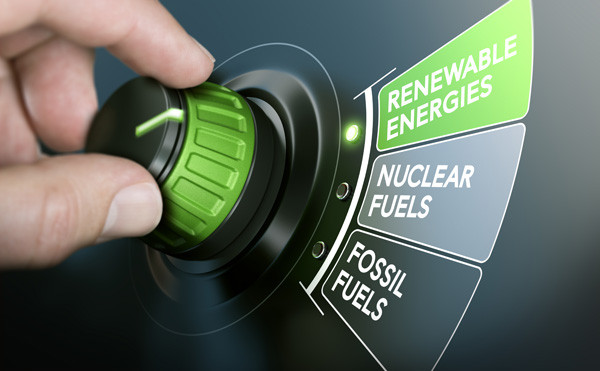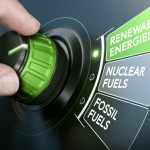Compare renewable and nonrenewable resources
Learn the differences between renewable and nonrenewable resources
Although renewable energy and climate change are topics we see discussed in the news every day, the terminology is still new to many. What is renewable energy? What are the benefits and drawbacks of both renewable and nonrenewable sources of energy?
Let's look at the most frequently asked questions about climate change and renewable energy so that you can make informed decisions about how to live your life.
What are renewable and non-renewable energy sources?
A renewable energy source can be described as a resource that we have unlimited access to, and it is one that continually replenishes itself without the need for human intervention. Renewable energy comes from natural elements like wind, water, and sun, as well as plant matter. No matter how much energy we use, there will always be wind blowing and sun shining, and water flowing.
On the other hand, nonrenewable energy sources are not available in large quantities. This is most often the case for fossil fuels like natural gas, oil, or coal. These resources are not organic, and they require hundreds of thousands to be created. They also need to be in a hyper-pressurized atmosphere to produce the oil, coal, and gas that we use as fuel. They are irreversible once they have been burned.
What is the difference between renewable and nonrenewable resources?
Renewable energy uses natural energy to create the energy we can use. Wind's natural kinetic power is used to generate electricity. The wind is there forever, so it can't be "used up." Nonrenewable resources cannot be used more than once.
Other than the fact that some resources are replenishable, the primary difference between renewable energy sources and nonrenewable ones is the financial cost, exhaustion rate, and environmental costs.
What are some examples of renewable resources?
Here are some examples of renewable resources:
- Wind
- Solar
- Hydropower
- Tidal power
- Geothermal
- Biomass
- Hydrogen
What are some examples of non-renewable resources you can use?
These are examples of nonrenewable resources examples:
- Coal
- Oil
- Natural gas
- Nuclear energy
How do renewable and non-renewable resources get replenished and obtained easily?
Nonrenewable Resources: The extraction of nonrenewable resources requires drilling or mining into the Earth's surface. This can be dangerous for workers, and it can also disrupt the natural landscape. It then has to be transported around the world, which can cause dangerous events like oil spillages.
Renewable: Renewable resources can only be obtained where there is a suitable technology and the resource can be found. Solar energy can be generated from any roof in [location]. Many coastlines are suitable for offshore wind farms, while rivers and streams make great hydropower. It is replenished when there is enough power to produce electricity.
What do renewable and nonrenewable resources have in common?
They use very different types of energy. They do share some commonalities, however:
- It costs money to produce and generate them.
- They create jobs
- Like fossil fuels, biomass can also be burned.
- They can power the world
Which resource is preferable, renewable or nonrenewable?
Everyone in an ideal scenario would use renewable energy sources every day. We would not use any resources that emit methane or CO2 into the environment. Instead, we would use clean, accessible, and reasonably priced resources for all.
Although fossil fuels can be stored easily and are reliable, they are quickly running out. They pollute our air, cause climate change, and can be dangerous to produce.
Although they are less reliable (solar power can only be used when the sun shines), renewable energy is immediately available. Renewable energy does not take millions of years to develop and is easily accessible. It also doesn't need to be transported by land or sea. Renewable energy sources are better for our environment. Increased reliance on solar and wind power will improve global air quality.
Renewable energy is more than a responsible choice. You can also provide clean air for people living in rural areas, reduce workplace deaths, create jobs locally, and stop contributing to climate change. It's time for you to make a change if you care about the future.




